Deep sips of mountain air, lush green, and summer heat tempered by short bursts of heavy mountain rain. “I missed this place more than I had realized!” That’s the thought reverberating in my mind as I arrived in the Fort Carson/Colorado Springs (The Springs) area on 9 June. It took me only a few brief minutes on my drive into The Springs to realize that this placefield is where I left a huge part of my heart. This location is the first of six sites I am expecting to visit as a researcher this summer. I was previously stationed here, from 2019 to 2021, which was such a brief period as I reflect on it now. However, I am realizing that my military assignment was long enough to make some beautiful core memories with my children and the surrounding land.
Before entering the city, while driving north on I-25, I was greeted by Tava Mountain (commonly known as Pike’s Peak). The mountain’s sacred presence was felt miles before I had even entered the city limits. Tava stands at 14,115 feet tall, and it’s a land mass that cannot be missed! I often refer to it as a place where the sky and Earth meet.
I continued my drive, eventually making a quick pass by Fort Carson, which I would visit later in the week.
I then checked into my site, which was located in Old Colorado City. I had never been in this part of town before, not even while stationed here, but I could tell that it had a unique story to tell, and I couldn’t wait to hear it. I did a brief walkabout that evening, noticing that Old Colorado City had a vibrant artistic feel. Just what I need for the writing and artmaking that would come later in the week. This area has over 15 independent galleries featuring over 100 different artists.

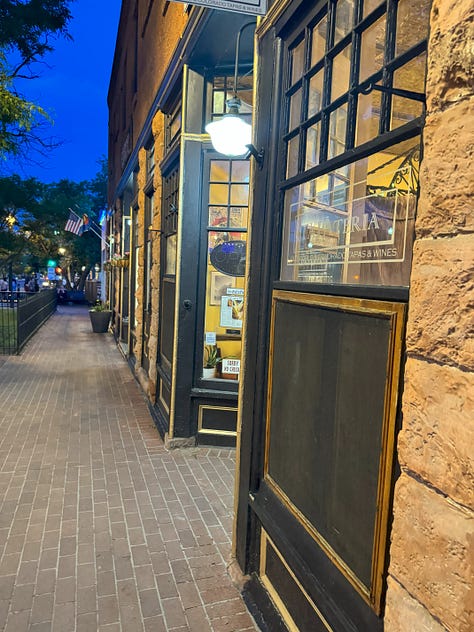

The buildings seemed to be a fun mix of old and new, but the older ones are what captured my imagination. I couldn’t help but wonder what this area looked like before modernity. After doing some internet sleuthing, I discovered that Old Colorado City was founded in 1859, and before that, it was a small settlement called El Dorado. When scheduling my trip, I had no idea I was booking my RV lodging in this historic area. I simply wanted to be close to the mountains. As luck would have it, I was staying in the first permanent town within the Pike’s Peak region.
I took the 10th of June to rest and acclimate, but on the 11th, I wanted to get beyond my urban environment and connect with the land, specifically Tava. I could no longer resist its pull anyway. I’ve always considered Tava and its inhabitants to be the embodiment of strength, so I decided to head straight for the summit in my jeep (Pancho). What I love about visiting Tava is that I never know what other mountain presences will make themselves known. It could be a black bear, a bobcat, a mountain sheep, or a really old pine. This time, Sasquatch was my primary muse. Yes Sasquatch! What’s a mountain without its mythological stories, right? And I can think of no stronger mountain dweller than a 15-feet-tall ape-like creature. Images and totems of Sasquatch are all over the place.
All fun and jokes aside, there is another story that deserves to be mentioned. Tava, which means sun in the Ute language, is considered to be a sacred place of origin within the Ute creation story. I entered Tava’s base early in the day, stopped to make an offering to the mountain, and began my slow ascent to the summit. I stopped at several points along the way, taking in the landscape with every sense possible. On the way to the top, one of the most noticeable differences was the temperature. On this day, it was about 75 degrees at the base of the mountain, but 33 degrees at its peak. When I arrived there, I had to play in the fresh snow that was piling up that day. It was June, and I was playing in the snow. How wild is that!
I was beyond grateful for the experience, and in that moment, I felt blessed to be at the start of a research experience that was all about exploring placefield connections. It’s taken me three years to get to this point on my academic mountain top, and this moment made it all worth it. As I played in the snow, I also thought about my cohort of friends who are working towards starting their fieldwork projects. I decided to create a few snow people and offer a prayer in honor of our small group of intellectual climbers.
A couple of days later, I decided to make another offering to the mountain. This time, it was sweat and perseverance at the Manitou Incline. The Incline sits at the base of the southern Rockies near Tava, and its story begins in 1907, as part of the development effort to build a hydroelectric plant and waterline. It became a popular attraction for hikers when it officially opened to the public in 2013. For me, the 2,768-step climb to the Manitou summit has always been more than just a hiking spot. Its an opportunity for a deeply reflective experience. The incline is a mirror that offers all sorts of insights into one’s character, especially when it comes to how they navigate hardship.
My first visit to this placefield was sometime back in 2019 when my military unit coordinated for us to hike the incline for physical training and esprit de corps. Back then, I made it to the top in around an hour or so. This time, the climb would take me roughly 2 hours and 15 minutes. I certainly wasn’t in the same shape. Nor did I care to be. To be honest, this experience wasn’t even about my shape or moving quickly. If anything, it was an opportunity to practice slowing time down, practice noticing, and simply being with the place. I was pleased to connect with the mountain in a way I hadn’t been able to do before. My step-by-step experiencing goes:
Step 0:
Prepared to listen.
Prepared to re-member.
Step 500:
The mountain can hold it all.
Steadfast and loyal to each other.
No steps are missed.
Step 900:
The pine.
The seeker.
The chipmunk.
The nomad.
The blue penstemon.
The spiritual vagabond.
All are here now.
Step 1300:
Agonizing steps of radical joy.
The dreading of the end.
When it's over, it's over.
Step 1600:
A long way up.
A long way down.
Loyalty goes both ways.
Step 1900:
Why ask why?
Questions and answers no longer matter.
Step 2000:
The false summit.
Who is the fool?
Who is the trickster?
The gift of slower.
Crawling is still moving forward.
Step 2300:
The path melts into authenticity.
The zebul of creativity is accessed.
A playful nature is preferred.
Step 2700
We were sweet to each other.
Nothing more is needed.
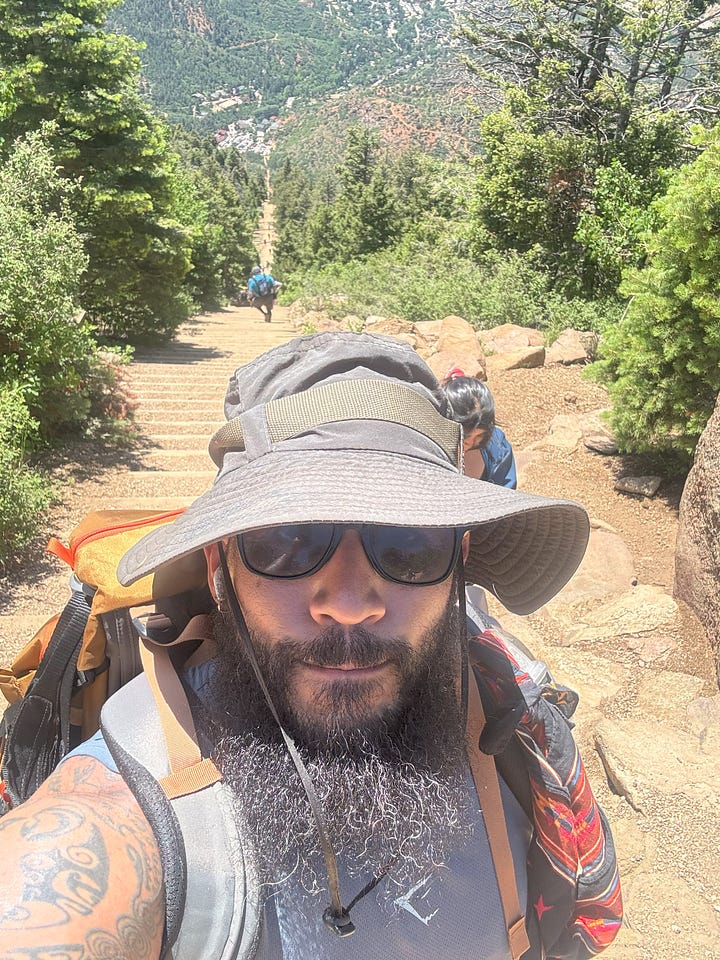

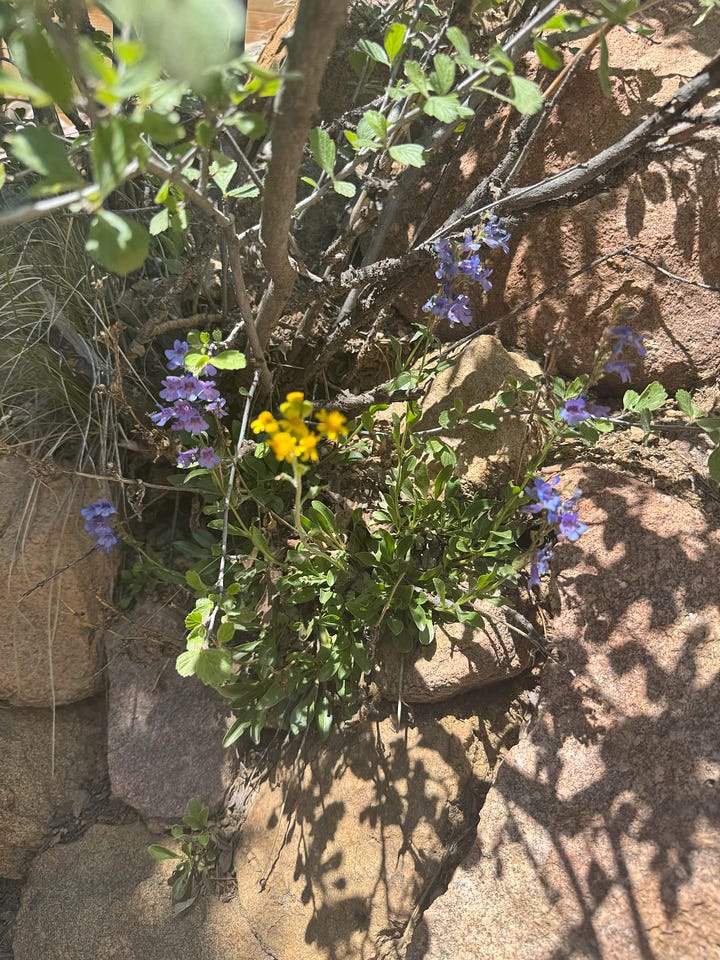

Below are a few placefield allies I connected with on this visit.
Some important themes:
Strength
Solitude
Resourcefulness
Deep Time
Rest
Steadfast and Loyal
Taking Risk
Courage of Heart and Love




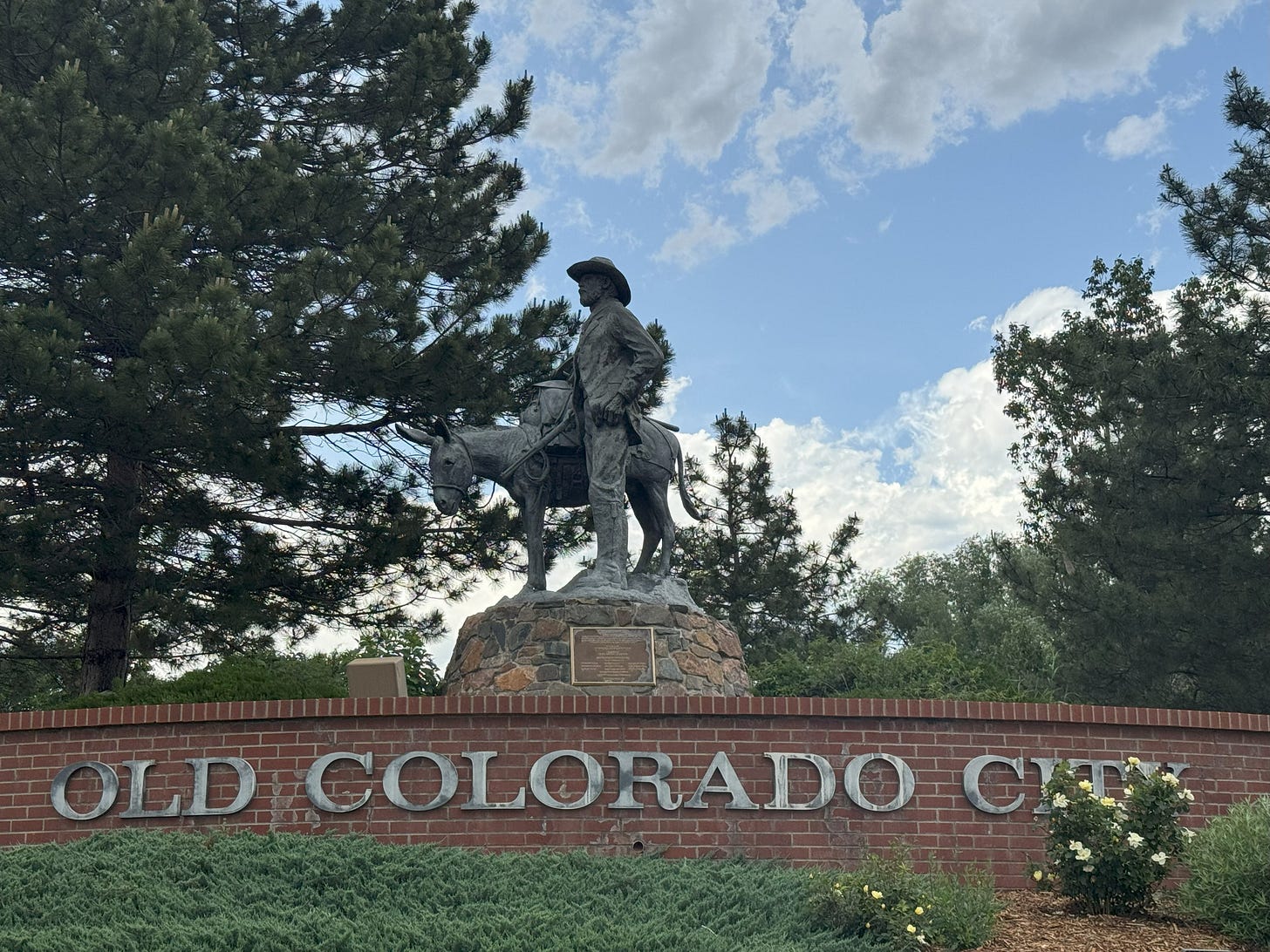
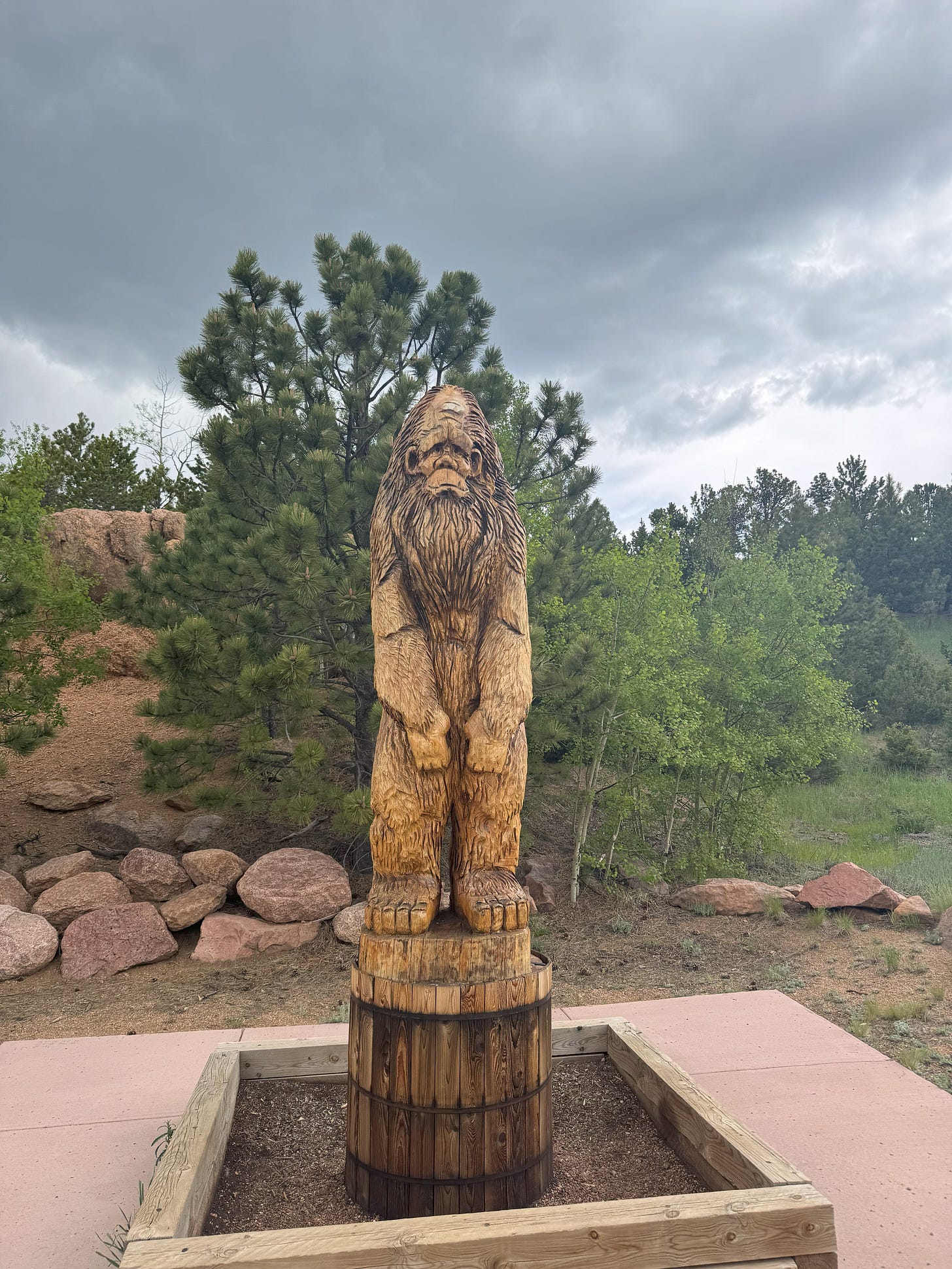
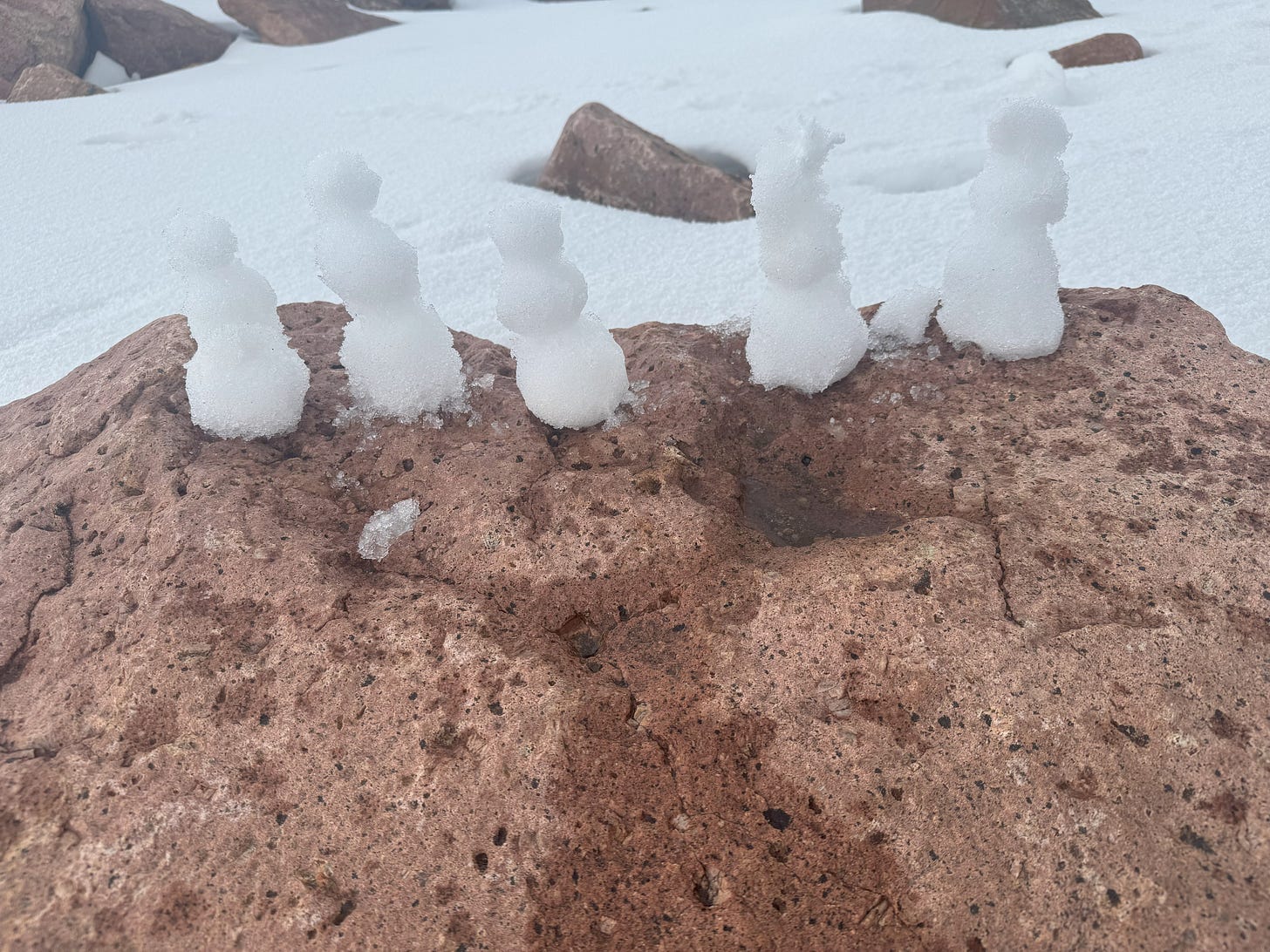


You may not know but the word, Manitou, means Spirit in Anishinaabemowin - the Algonkian language of the Chippewa, Ojibwe, Odawa, and Potawatomi (and other culture groups). It always struck me as interesting that the word Manitou is associated with a few different place names in Colorado since the Ute and other culture groups there were not Algonkian speakers - I don't think. Anyway, loved your notes along the Manitou Incline. The journey has definitely begun!
"We were sweet to each other." I love the noticing/offering.